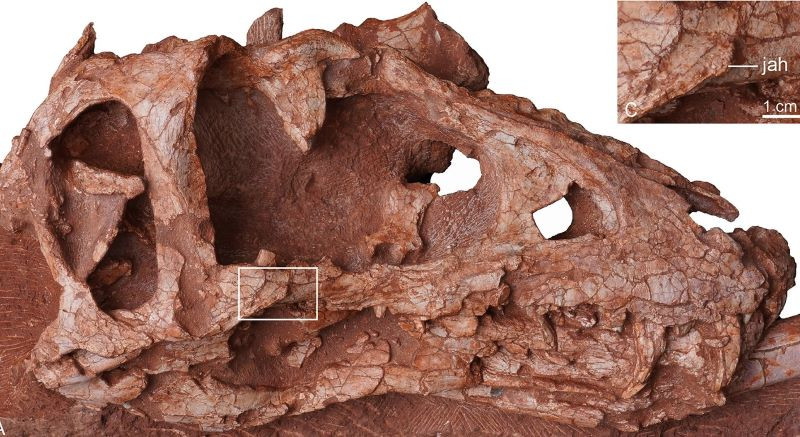
Chinese scientists discover new tyrannosaur species
A Chinese paleontological research team has identified a new species of tyrannosaur that lived during the Late Cretaceous period, approximately 72 to 66 million years ago. Researchers from the Zhejiang Museum of Natural History named the dinosaur "Asiatyrannus xui" in honor of Xu Xing, a Chinese scientist dedicated to dinosaur research. The fossil specimen includes a nearly complete skull, along with tail vertebrae and hind limb bones, marking the first deep-snouted tyrannosaur discovered in southeastern China, according to Zheng Wenjie, a researcher from the museum. Histological analysis revealed that the holotype of Asiatyrannus xui was not a fully mature adult but had passed through its most rapid growth stages. Zheng added that the skull measures 47.5 centimeters in length, and the body length was approximately half that of Qianzhousaurus, which is estimated to reach around nine meters at similar growth stages. The earliest tyrannosaurs appeared in the Middle Jurassic, around 165 million years ago. They became the apex predators in their respective ecologies during the final 20 million years of the Cretaceous in Asia and North America. The findings were recently published online in the journal Scientific Reports.

A Chinese paleontological research team has identified a new species of tyrannosaur that lived during the Late Cretaceous period, approximately 72 to 66 million years ago. Researchers from the Zhejiang Museum of Natural History named the dinosaur "Asiatyrannus xui" in honor of Xu Xing, a Chinese scientist dedicated to dinosaur research. The fossil specimen includes a nearly complete skull, along with tail vertebrae and hind limb bones, marking the first deep-snouted tyrannosaur discovered in southeastern China, according to Zheng Wenjie, a researcher from the museum. Histological analysis revealed that the holotype of Asiatyrannus xui was not a fully mature adult but had passed through its most rapid growth stages. Zheng added that the skull measures 47.5 centimeters in length, and the body length was approximately half that of Qianzhousaurus, which is estimated to reach around nine meters at similar growth stages. The earliest tyrannosaurs appeared in the Middle Jurassic, around 165 million years ago. They became the apex predators in their respective ecologies during the final 20 million years of the Cretaceous in Asia and North America. The findings were recently published online in the journal Scientific Reports.
